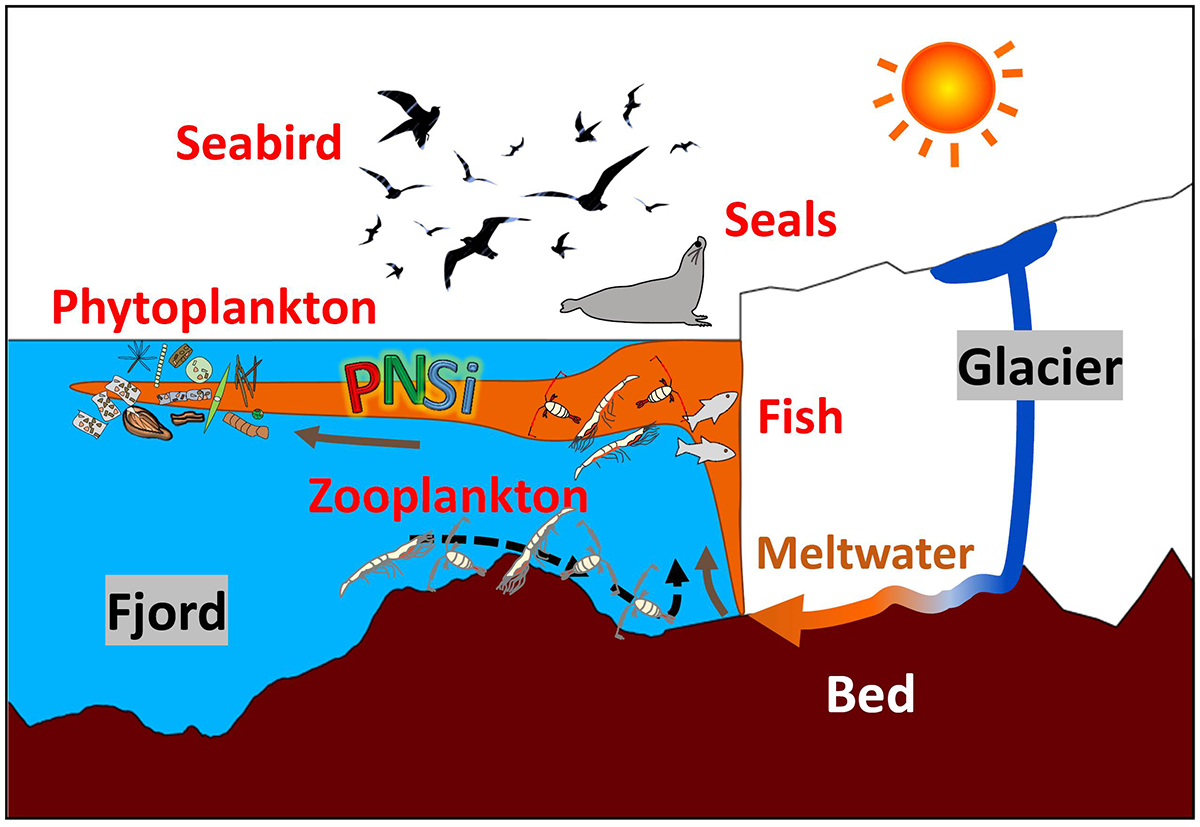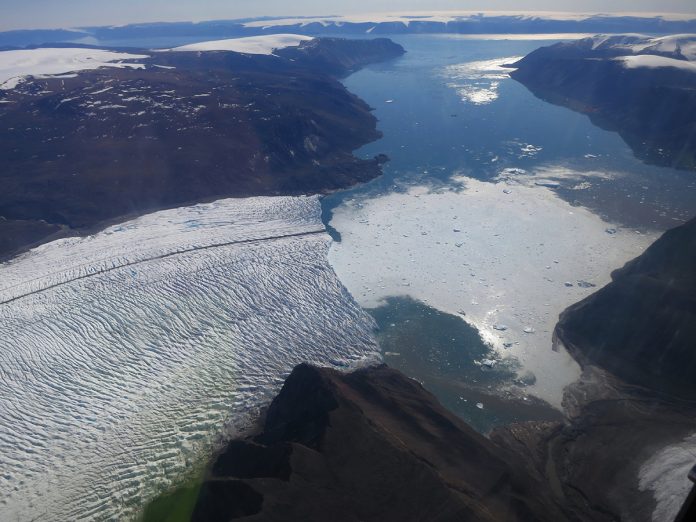Shin Sugiyama, Institute of Low Temperature Science, Hokkaido University, examines glacier melting and its impact on the marine ecosystem and society in Greenland
The Greenland ice sheet is losing ice, becoming one of the most important contributors to the recent acceleration in rising sea levels. Air temperature rise under the rapidly changing Arctic climate is an important driver of ongoing ice loss, but ice-ocean interaction plays a key role as well. How is the ocean impacted by the melting ice sheet?
Marine-terminating glaciers
Glaciers accumulate snow and ice in high elevation areas. This accumulation is balanced by melting on the glacier surface when it terminates on land. For glaciers flowing into the ocean and lakes, however, additional ice wastage occurs by iceberg discharge and melting in water. The Greenland ice sheet is drained by a number of marine-terminating outlet glaciers, which are rapidly retreating, thinning and speeding up. Approximately half of the ice sheet mass loss is attributed to the recently increasing ice wastage at the boundary of the glacier fronts and the ocean.
Drivers of the glacier change
Several mechanisms are proposed as drivers of the glacier change near the ocean. Submarine melting is increasing because of a warming ocean and changing circulations, which leads to retreat and thinning of glaciers. Ice flow speed increases when the ice front retreats from a stable position and ice gets afloat after thinning. The acceleration causes an increase in ice discharge into the ocean, which drives further retreat and thinning. Presumably, complex feedbacks among the retreat, thinning and acceleration are driving the mass loss of the glaciers under the influence of ice-ocean interaction.
Bowdoin Glacier
To investigate the processes driving the recent ice loss in Greenland, we repeatedly visit Bowdoin Glacier, a marine-terminating glacier in northwestern Greenland. This glacier began a rapid retreat in 2008 after a long-lasting stable condition for more than 20 years (Sugiyama et al., 2015). Field and satellite data indicated a two-fold acceleration in ice flow speed since 2000 and sustained thinning at a rate of approximately 5m every year. Ice thickness and ocean depth measurements suggested that the glacier was stabilised by a basal bump until 2008, when the ice near the front got afloat after thinning.

Glacier fjord ecosystem
As soon as we initiated field observations at Bowdoin Glacier (Fig. 1), we became aware of a unique ecosystem in the fjord near the glacier front. A large number of birds are gathering and seals are frequently observed in the vicinity of upwelling turbid water. We expand our study from the glacier to the ocean to investigate the link between the ecosystem and the glacier. The results clearly showed that subglacial discharge carries nutrient-rich deep water, plankton and even small fish to the fjord surface, which enables active marine production and provides a feeding area for seabirds and marine mammals (Kanna et al., 2018) (Fig. 2). This biological hot spot is sustained by the glacier discharge acting as a pump, thus highly sensitive to the melting and retreat of the glacier in the future.

Collaboration with the residents
The ecosystem in the glacier fjord is important for the Greenlandic society. Fisheries and traditional hunting activities rely on the fish and marine mammals in the fjord. Do rapidly changing glaciers give impact on society through the fjord ecosystem? To answer this question, we work together with residents of Qaanaaq Village for field measurements and sampling in the ocean. One example is an in-situ recording of vocalization of narwhals, an endemic species in the Arctic and quarry of traditional hunting in the region (Fig. 3). It is only possible with the help of experienced local hunters to approach narwhals because they are very shy and perceptive. Our visual survey and sounds recorded by our underwater microphone indicate a presence of narwhals as close as 1 km from the glacier front (Podolskiy and Sugiyama, 2020). Researchers did not realize that this glacier front was a suitable narwhal’s habitat, although it has been known for the hunters as a good narwhal hunting spot. With the help of indigenous knowledge, we are on the way to reveal a complex link between climate change and society in Greenland.
References
- Kanna, N., et al. (2018), Upwelling of macronutrients and dissolved inorganic carbon by a subglacial freshwater driven plume in Bowdoin Fjord, northwestern Greenland. Journal of Geophysical Research Biogeosciences, 123, 1666–1682, doi:10.1029/2017JG004248.
- Podolskiy, J. and S. Sugiyama, S. (2020) Soundscape of a narwhal summering ground in a glacier fjord (Inglefield Bredning, Greenland). Journal of Geophysical Research Oceans, 125, e2020JC016116, doi:10.1029/2020JC016116.
- Sugiyama, S., et al. (2015), Glacier dynamics near the calving front of Bowdoin Glacier, northwestern Greenland, Journal of Glaciology, 61(226) , 223–232, doi: 10.3189/2015JoG14J127.
This research was funded by Japanese Ministry of Education, Culture, Sports, Science and Technology through ArCS (Arctic Challenge for Sustainability) and ArCS II Projects.
Researchers: Prof. Shin Sugiyama (Hokkaido Uni), Dr. Evgeniy Podolsky (Hokkaido Uni), and Dr. Naoya Kanna (University of Tokyo)
Please note: This is a commercial profile












